Welcome to another post of my strange animals series where you get to meet some of the weirdest, coolest, and craziest animals on a daily basis!
My beloved steemians, you are in a treat for today! As you can see from the title, you get to see 11 (yes, 11!), weird animals instead of just one. It must be your lucky day or something so make sure to hit that like button like crazy! XD
All animals in today's compilation are nudibranchs. Here's a boring description from wikipedia if this is your first time hearing the term:
"Nudibranchs are a group of soft-bodied, marine gastropod molluscs which shed their shells after their larval stage.[3] They are noted for their often extraordinary colours and striking forms. Currently, about 2,300 valid species of nudibranchs are known."
As you are about to see, Nudibranchs are definitely amongst the most beautiful, weird looking, colorful and breathtaking animals lurking in the oceans of our planet.
I won't be putting much info about each species, because it would take me years to finish this post. Instead, I will let the photos & videos do most of the talking. However, I will leave some links at the end of the article for those of you who would like to learn more.
Enough with the introduction. Enjoy:
1# Glaucus atlanticus & Glaucus marginatus
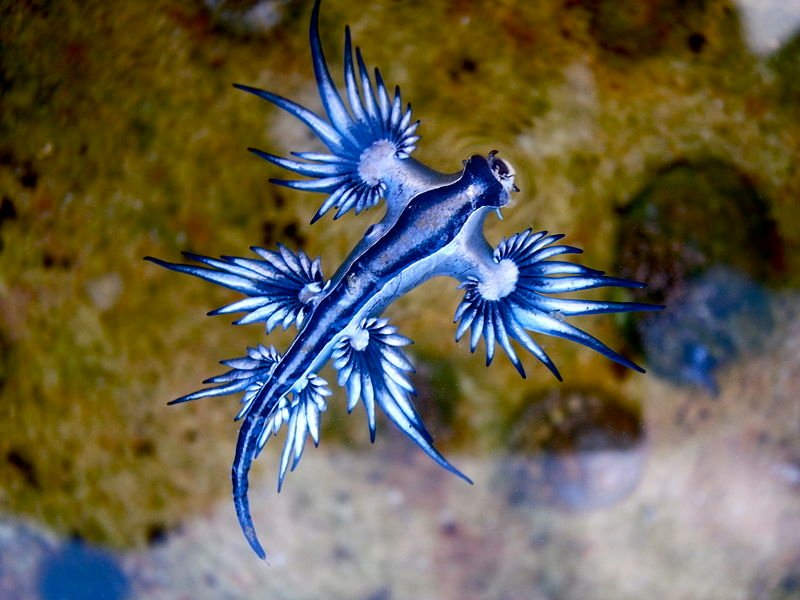 Glaucus atlanticus (credit, CC BY-SA 2.0)
Glaucus atlanticus (credit, CC BY-SA 2.0)
Ok, they are two different species but they are closely related and look almost identical so I will count them as one! G. atlanticus, or blue dragon as it's commonly known, is probably the most famous of the two and my all time favorite from this compilation. These guys are pretty small, about 3 cm when fully matured!
As for Glaucus marginatus, it looks like a smaller and thickier version of G. atlanticus.
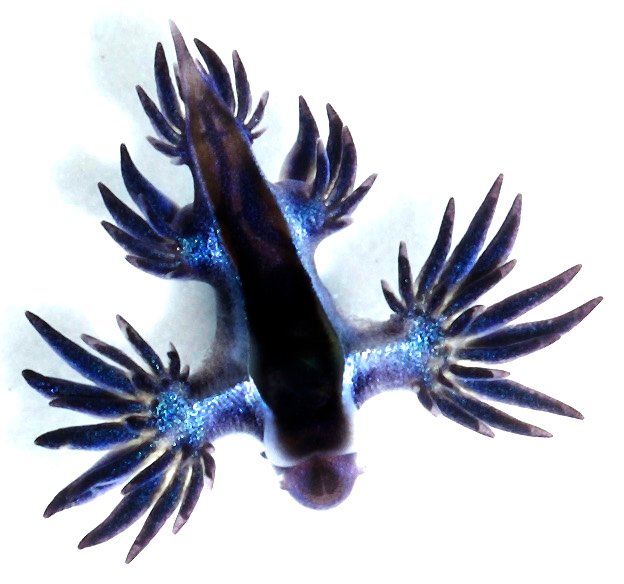
Glaucus marginatus (credit, CC BY 2.0)
They both look like tiny alien spaceships, don't they? Any geek out there remembers the shadow-vessels from Babylon 5?
Here's a cool video of the creatures, I just hope they were released back to the ocean!
2# Berghia coerules
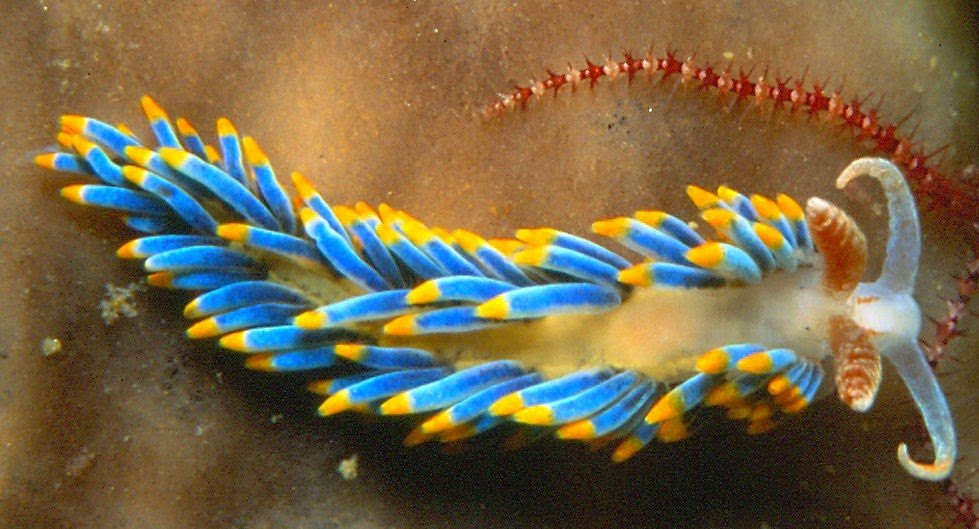 Berghia coerulescens (credit, public domain)
Berghia coerulescens (credit, public domain)
Again, the only word that comes to mind when I see B. coerulescens is.. alien-like! I can't think of any other fitting words to describe this little critter! Well, this is actually true for most of the creatures in this list. I don't want to be repetitive so I won't be using this word again! These guys are about 4-7 cm long when fully grown.
Now to the next one!
3# Jorunna funebris
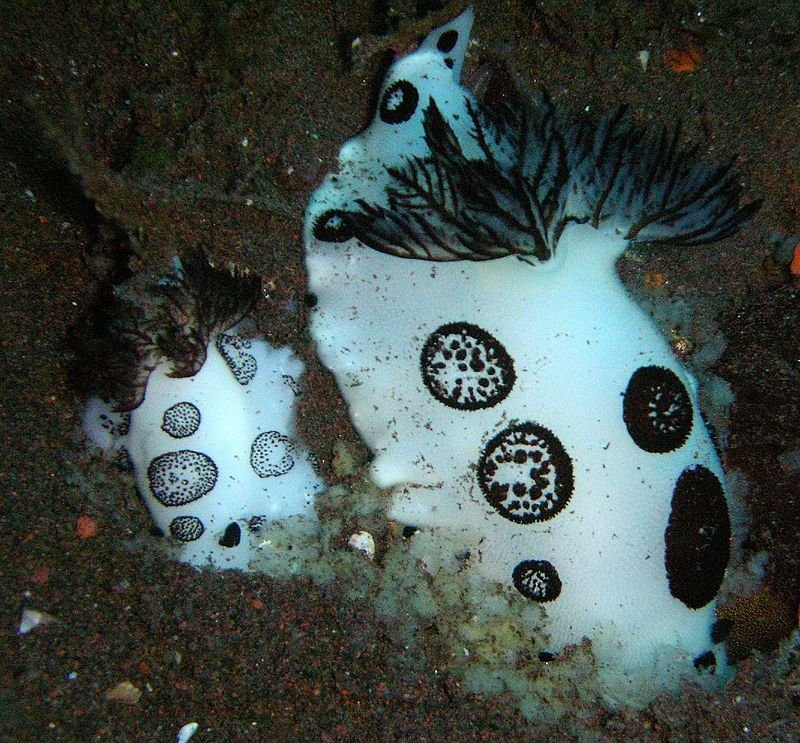 (credit, CC BY 2.0)
(credit, CC BY 2.0)
This is J. funebris, or the OREO nudibranch as I like to call it.. Hmmm.. wonder how it tastes!
5# Hypselodoris bullockii
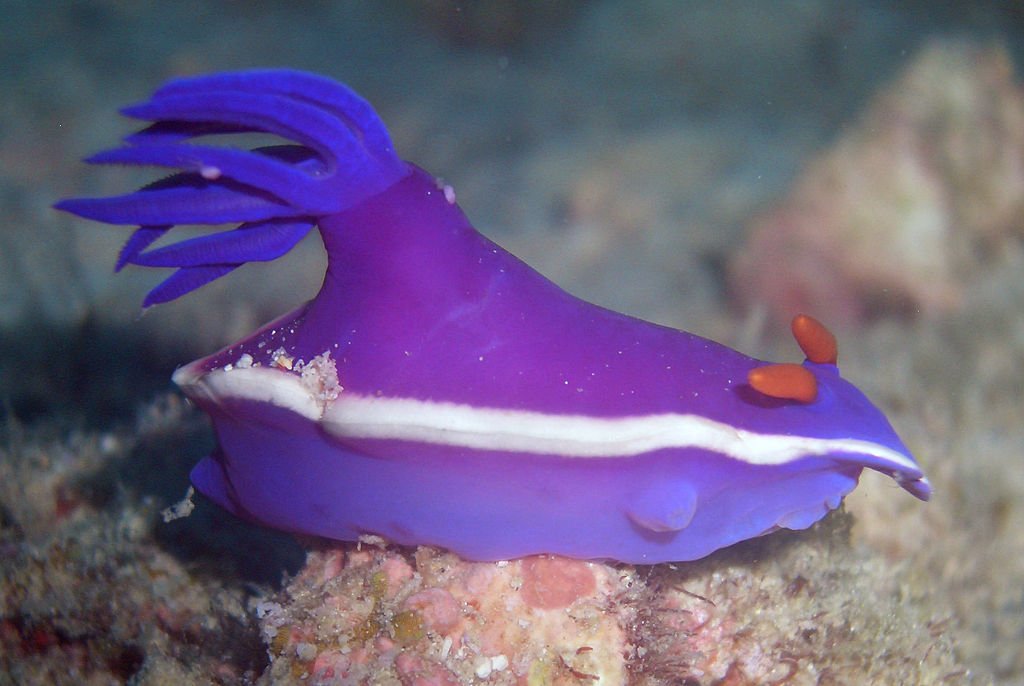 Purple Hypselodoris bullockii (credit, CC BY 2.0)
Purple Hypselodoris bullockii (credit, CC BY 2.0)
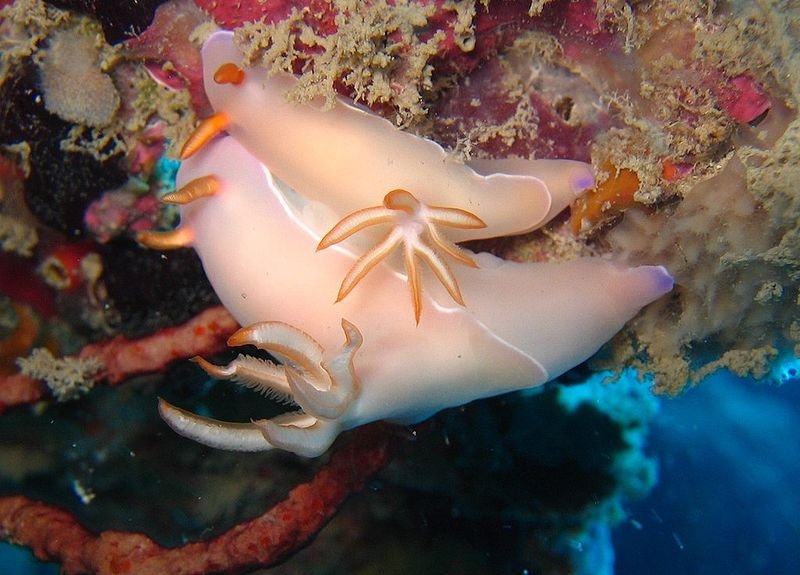 Two very pale Hypselodoris bullockii individuals (credit, CC BY-SA)
Two very pale Hypselodoris bullockii individuals (credit, CC BY-SA)
As you can see in the photos, these guys vary a lot, with their color ranging from a pure white to a deep purplish background. The species is known to occur in the western Pacific as far south as southern Queensland. It also occurs off north western Australia, Indonesia, Thailand, in the tropical western Pacific and the central to eastern Indian Ocean.
6# Hypselodoris apolegma
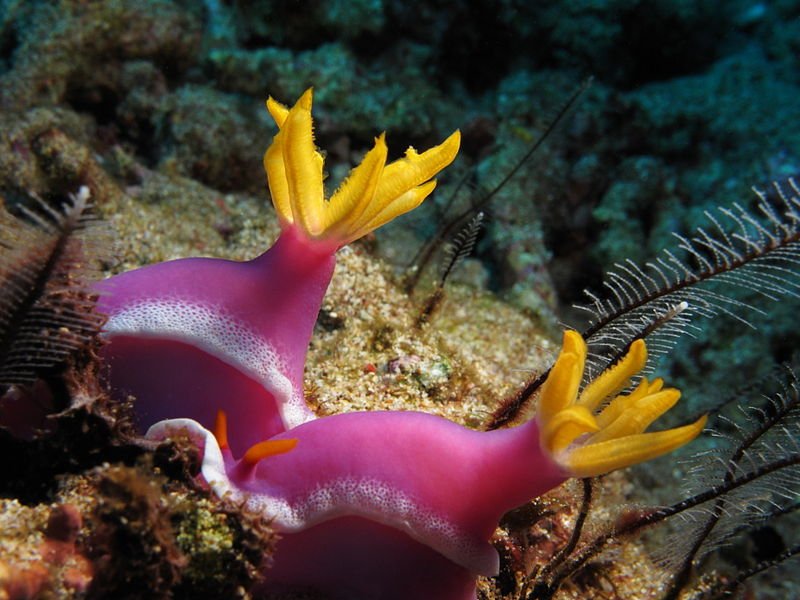
A close relative of H. bullockii, H. apolegma is a similar-looking species that was previously assumed to be just a different colored variation of H. bullockii. However, recent DNA studies revealed the two species to be distinct. H. apolegma can be easily distinguished by a reticulate pattern that gradually merges in to the pinkish purple.
7# Felimare picta
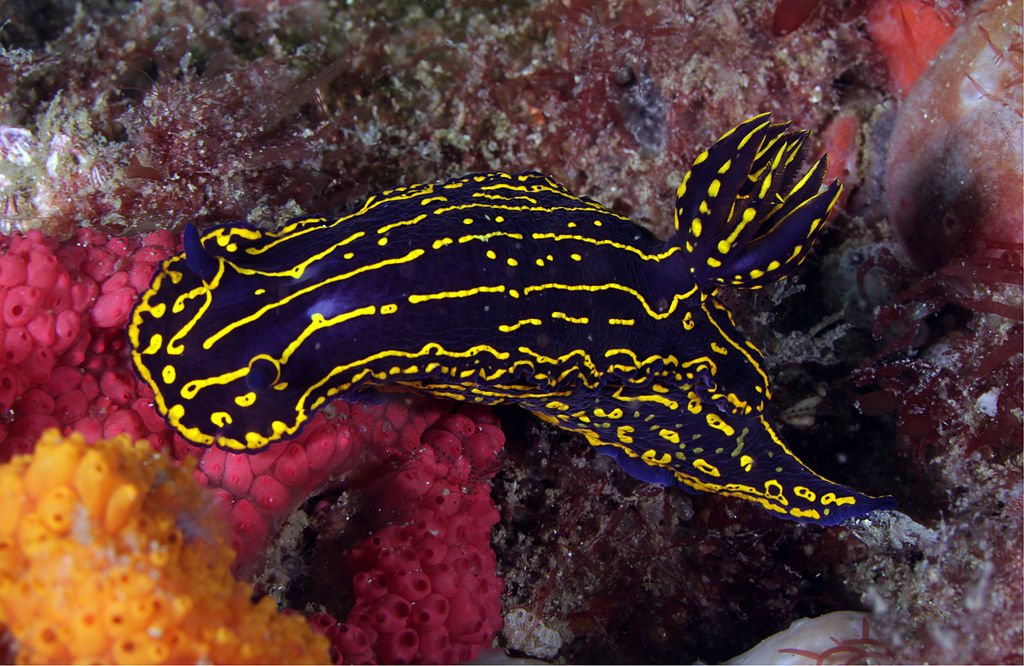 (credit, public domain)
(credit, public domain)
This weirdo is one of the biggest nudibranchs in the list and gets to be about 20 cm long. It can be found in rocky seabeds throughout the Mediterranean Sea (Greece), European waters (Spain, Portugal), the Eastern North Atlantic Ocean (Azores) and the Gulf of Mexico.
8# Goniobranchus annulatus
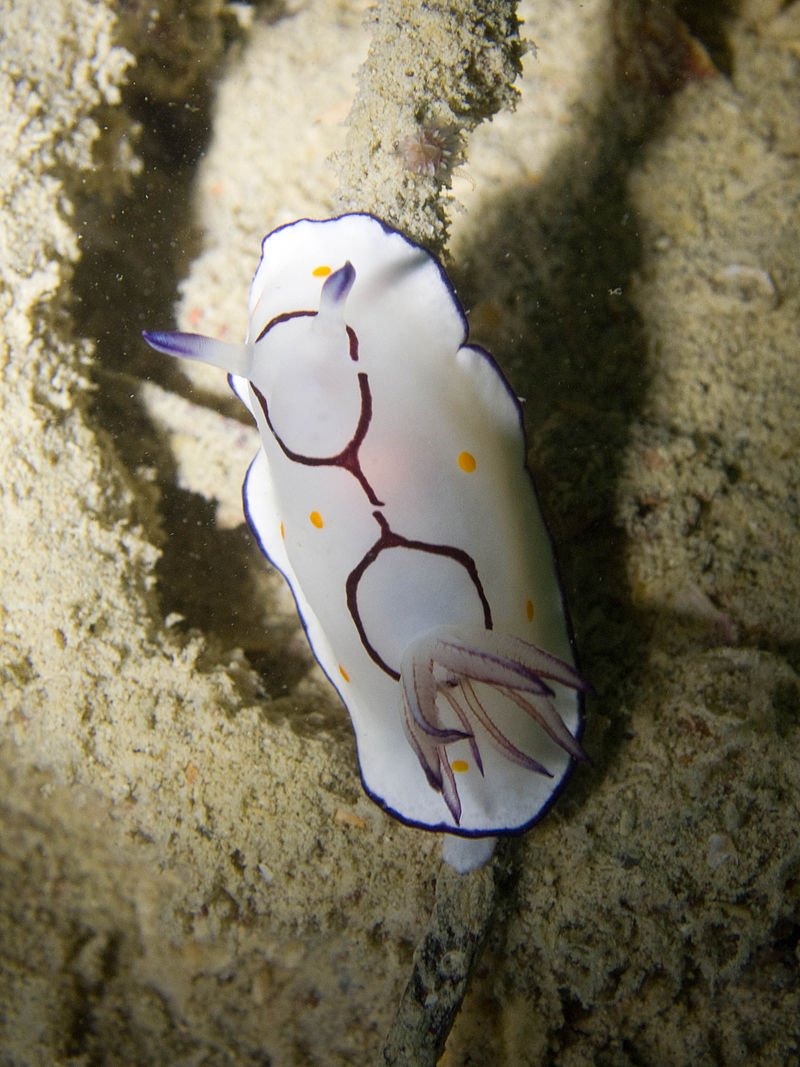 (credit, CC BY 2.0)
(credit, CC BY 2.0)
G. annulatus is a medium sized slug (about 10 cm long) that occurs in the Red Sea, the Indian Ocean, from the East Coast of South Africa to Thailand. I think there is something really hypnotic about it. I just can't stop looking at it for some reason!
9# Goniobranchus geminus
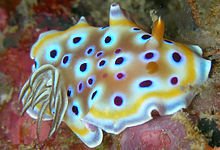
(credit, CC BY 2.0)
It might not look like it, but DNA studies have shown that this one is closely related to Goniobranchus annulatus (#8). It's about half the size, with adults getting to be about 5 cm long. The species occurs in the Indian Ocean from Kenya to Sri Lanka and in the Red Sea. It has a preference for the external slopes of coral reefs.
10. Nembrotha kubaryana
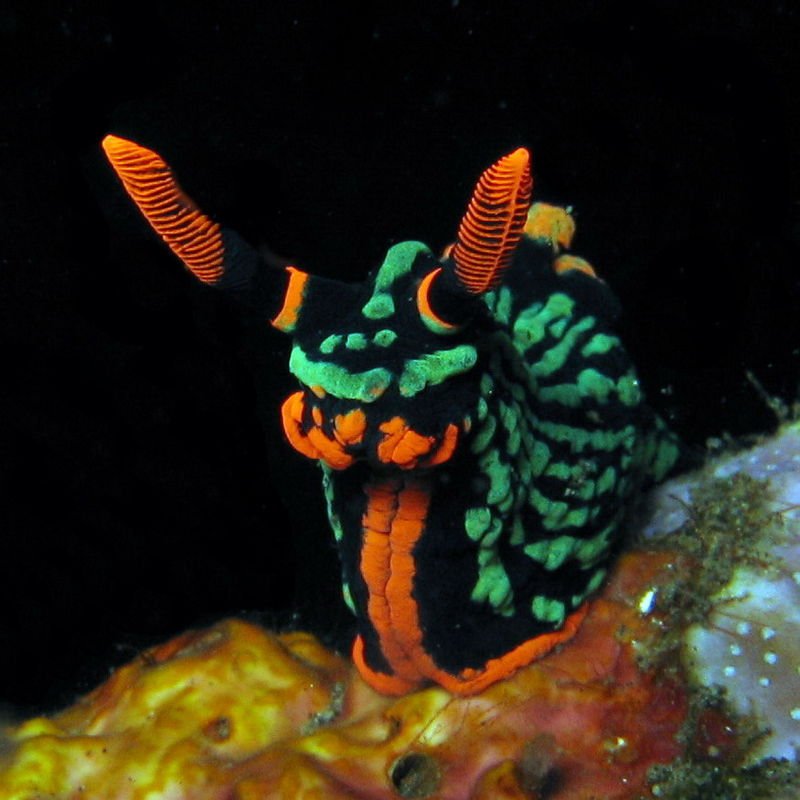 (credit, CC BY-SA 3.0)
(credit, CC BY-SA 3.0)
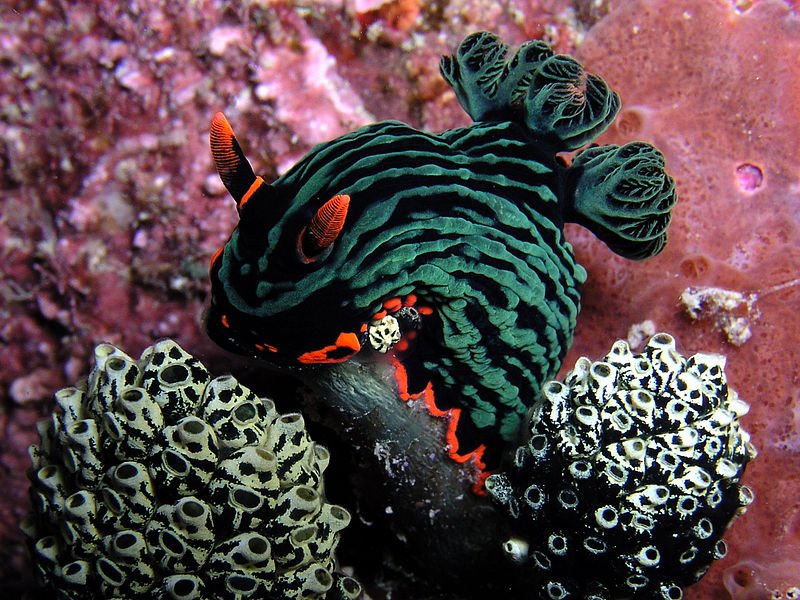 (credit, CC BY-SA 3.0)
(credit, CC BY-SA 3.0)
This one looks like a real badass! Like the bully and eater of other poor nudibranchs! It gets to be about 12 cm long and occurs in the tropical Indo-West Pacific.
11# Limacia cockerelli
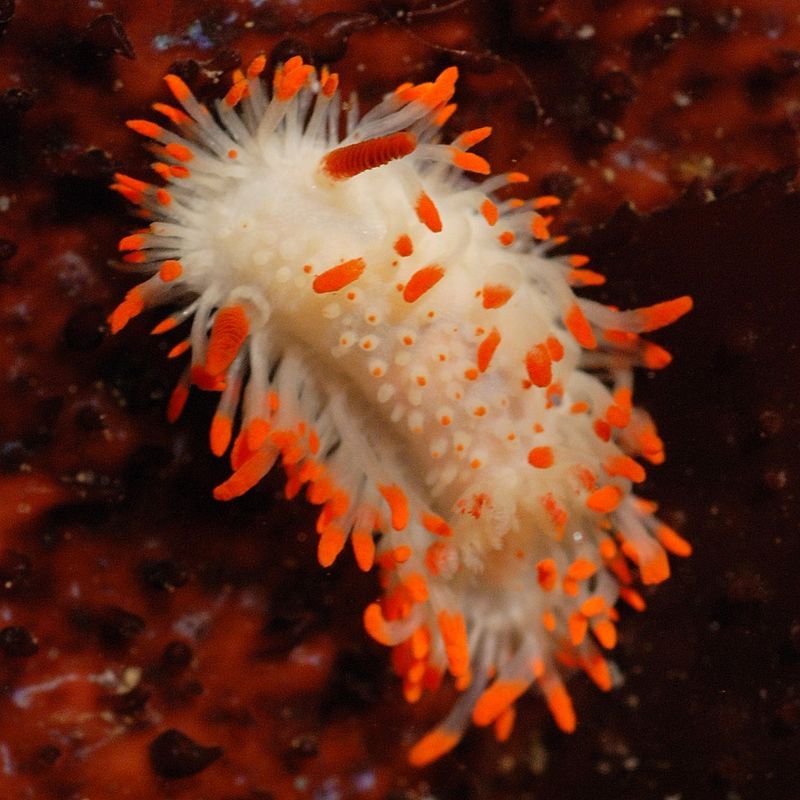 (credit, CC BY-SA 2.0)
(credit, CC BY-SA 2.0)
This one is one of the smaller guys in this list, with a max length of about 2.5 cm. The species can be found in two forms. The "northern" form which has white tubercles down the middle of the dorsum and the second form which has tubercles that are slightly longer and tipped with orange.
Honorable Mention: Hexabranchus sanguineus
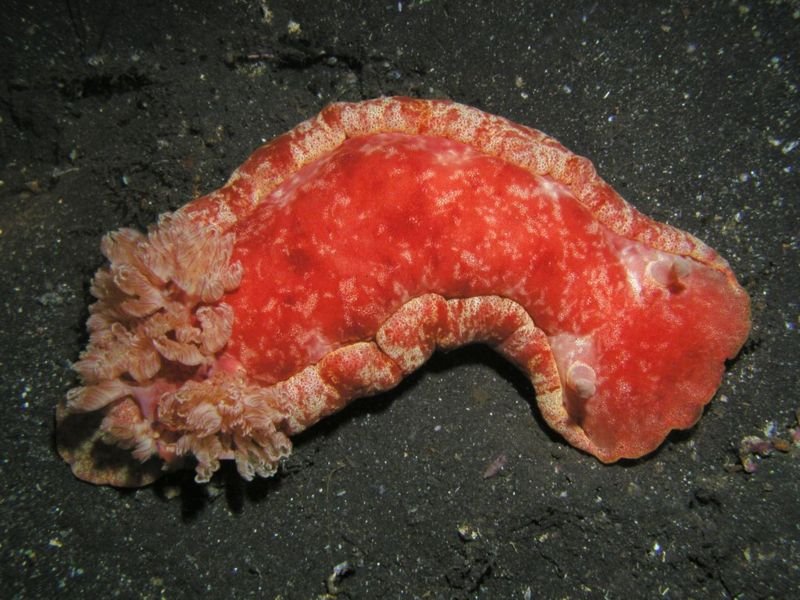 (credit, CC BY 2.0)
(credit, CC BY 2.0)
Finally, I want to make a honorable mention to Hexabranchus sanguineus, commonly known as the Spanish dancer. Yes, it might not be the most exotic looking nudibranch, but it is the largest! A true giant (by nudibranch standards) that can grow to be at least 60 cm long!
The End!
This is the end of my personal top-10 list of the weirdest looking nudibranchs and believe me, it was really hard to compile...Why? Well the competition is really fierce out there! Just head over to google images and search for "nudibranch"! There are so many other awesome species that will make your jaw drop!
References & Further Reading
- https://en.wikipedia.org/wiki/Glaucus_atlanticus
- https://en.wikipedia.org/wiki/Glaucus_marginatus
- https://en.wikipedia.org/wiki/Berghia_coerulescens
- https://en.wikipedia.org/wiki/Jorunna_funebris
- https://en.wikipedia.org/wiki/Hypselodoris_bullockii
- https://en.wikipedia.org/wiki/Hypselodoris_apolegma
- https://en.wikipedia.org/wiki/Felimare_picta
- https://en.wikipedia.org/wiki/Goniobranchus_annulatus
- https://en.wikipedia.org/wiki/Goniobranchus_geminus
- https://en.wikipedia.org/wiki/Nembrotha_kubaryana
- https://en.wikipedia.org/wiki/Limacia_cockerelli
- https://en.wikipedia.org/wiki/Spanish_dancer

My dear readers, thank you for reading today's article. Hopefully, you found it interesting enough to follow me, @trumpman, for more weird and bizarre creatures from all around the word! If you like strange animals as much as I do, here are the last 3 weirdos of this series:
- Cebrennus rechenbergi: The Spider That Wanted To Be A Gymnast
- Beauty Stings: The Stinging Rose Moth Caterpillar
- Pacific Barreleye: Meet the Fish With the Transparent Head!
- Phrynosoma Hernandesi: Meet the Lizard That Shoots Blood From Its Eyes!
- Sea Pigs: Adorable, Alien-Like, Deep-Sea Creatures
Steemstem & Steemit Education
Interested in science? Please, don't forget to check the @steemstem project, a community-driven project meant to promote well-written, high-quality, STEM-related content (STEM as for Science, Technology, Engineering and Mathematics). Just click here to join us! And for those engaging with education, @steemiteducation is here to join all steemian educators in their common cause of making the job easier, more effective and more fun!
Greek Community
A big thanks goes to my fellow greeks who support me with their love! You guys rock! A special mention also goes to @rouketas and @skapaneas for bringing us all together! I love you guys all :)








